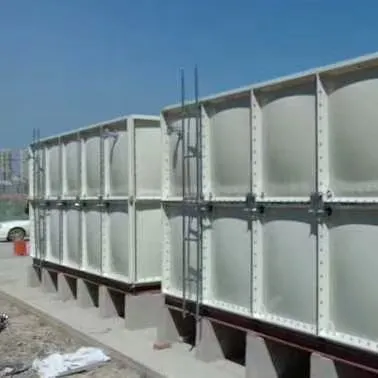loading...
- No. 9, Xingyuan South Street, Dongwaihuan Road, Zaoqiang County, Hengshui, Hebei, China
- admin@zjcomposites.com
- +86 15097380338
- Welcome to visit our website!
frp trench drain
Understanding FRP Trench Drains A Comprehensive Overview
In the dynamic landscape of modern construction and infrastructure, the choice of materials and drainage systems is critical for sustainability and functionality. One innovative solution that has gained traction is the use of Fiber-Reinforced Polymer (FRP) trench drains. This article explores the characteristics, benefits, applications, and installation considerations of FRP trench drains, providing insights into why they are an optimal choice for various environments.
What Are FRP Trench Drains?
FRP trench drains are linear drainage systems engineered from fiber-reinforced polymer materials. The composite construction typically involves a mixture of plastic and glass fibers, which results in a product that is lightweight, high-strength, and resistant to corrosion. These trench drains are designed to collect and channel surface water, preventing flooding and water damage while enhancing the safety and longevity of surfaces in both commercial and residential settings.
Advantages of FRP Trench Drains
1. Corrosion Resistance One of the most significant advantages of FRP trench drains is their exceptional resistance to corrosion. Unlike traditional materials such as concrete or metal, FRP does not rust or degrade when exposed to harsh chemicals, salt, or moisture. This makes them particularly suitable for industrial applications or regions with extreme weather conditions.
2. Lightweight and Easy to Install FRP products are considerably lighter than conventional drainage materials. This reduces transportation costs and simplifies installation processes. Workers can handle and install these drains with less manpower and equipment, leading to reduced labor costs and shorter project timelines.
3. High Strength and Durability Despite their lightweight nature, FRP trench drains offer remarkable strength and durability. They are engineered to withstand heavy loads and are less prone to cracking or breaking under stress. This makes them ideal for high-traffic areas such as roadways, parking lots, and airport runways.
4. Design Flexibility FRP trench drains can be manufactured in various shapes, sizes, and colors, allowing for customizable solutions that meet specific project requirements. This versatility extends to their integration with other drainage systems and landscape designs, enhancing aesthetic appeal while maintaining functionality.
5. Low Maintenance The non-porous surface of FRP trench drains prevents the buildup of debris and algae, reducing the need for frequent cleaning. This low-maintenance characteristic contributes to long-term cost savings and efficiency in drainage management.
Applications of FRP Trench Drains
FRP trench drains find applications across diverse fields due to their unique characteristics
. Common uses includefrp trench drain

- Industrial Facilities In manufacturing plants, food processing units, and chemical processing facilities, FRP trench drains efficiently manage wastewater and protect equipment from corrosion.
- Commercial Areas Shopping malls, parking lots, and driveways benefit from FRP trench drains that handle surface water efficiently, maintaining safe and usable environments.
- Transportation Airports, highways, and railways leverage the durability and strength of FRP trench drains to handle both regular traffic loads and extreme weather conditions.
- Municipal Projects City planners are increasingly adopting FRP solutions for urban developments, utilizing their effective water management capabilities while improving overall infrastructure resilience.
Installation Considerations
When implementing FRP trench drains, proper planning and installation are essential for optimal performance. Key considerations include
- Site Assessment Understanding site conditions, such as soil type and existing drainage patterns, ensures that the trench drains are integrated effectively.
- Load Specifications It’s vital to select the appropriate drain capacity and design to handle expected water flow and load conditions specific to the application.
- Connection to Existing Systems Efficient integration with current drainage systems is crucial. Properly aligning FRP drains with other drainage channels ensures seamless water flow management.
- Compliance with Regulations All installations must adhere to local building codes and environmental regulations to ensure safety and sustainability.
Conclusion
FRP trench drains represent a forward-thinking approach to drainage solutions, combining strength, durability, and resistance to environmental factors. With applications ranging from commercial businesses to infrastructural projects, their advantages are compelling. As the demand for effective water management solutions grows, understanding and implementing FRP trench drains can pave the way for more sustainable and resilient infrastructure.
-
GRP Structures: The Future of Lightweight, High-Performance EngineeringNewsJun.20,2025
-
FRP Water Tank: High-Performance Storage for Corrosive and Clean Water SystemsNewsJun.20,2025
-
FRP Square Tube: The New Industry Standard for Chemical and Structural ApplicationsNewsJun.20,2025
-
FRP Pultruded Profiles: The Ultimate Choice for Lightweight Structural StrengthNewsJun.20,2025
-
FRP Handrails: The Safer, Smarter, and Stronger Choice for Modern InfrastructureNewsJun.20,2025
-
FRP Grating: The Smart Solution for Durable, Lightweight Industrial FlooringNewsJun.20,2025
-
Why Choose a Galvanized Water Tank for Your Storage NeedsNewsMay.21,2025
